17th Century Fujian Assembly Hall in Hoi An - UNESCO Viet Nam
Hello everyone, welcome back to Viet Nam. Today, I will take you to a very special gem tucked away quietly within the picturesque walking streets of Hoi An Ancient Town. The Fujian Assembly Hall, known by locals as Phúc Kiến Hội Quán, was built in the late 17th century by the Fujian Chinese community, which had settled in Hoi An due to its prominence as an international trade port. Hoi An Ancient Town is recognized as a UNESCO World Heritage Site partly because of sites like these, which are spread throughout the old quarter, and are well preserved, beautifully designed, and historically significant.
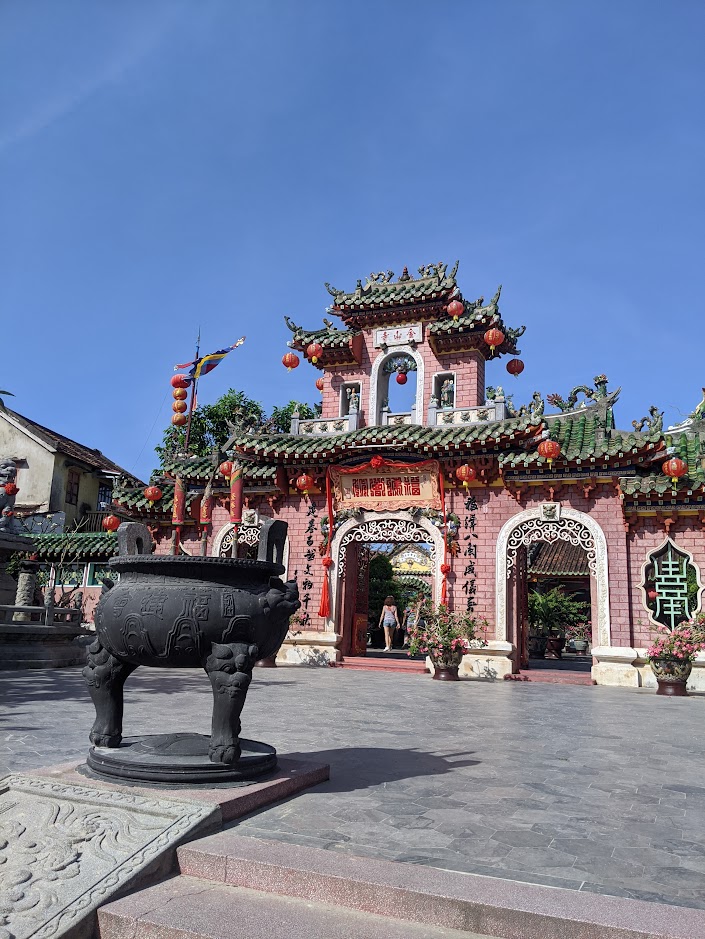
Before the ornate structures that stand today, there was a thatched-roof pagoda on this same spot, dedicated to the sea goddess known as Mazu by Chinese communities and Thiên Hậu when discussed in Vietnamese. The Fujian Chinese that settled here came from the Fujian province in Southeastern China, and were mostly sailors and merchants. To protect them on their frequent voyages, this community elicited the help of the deities from their homeland. You can see that Mazu is still being honored today in the shrine pictured below.
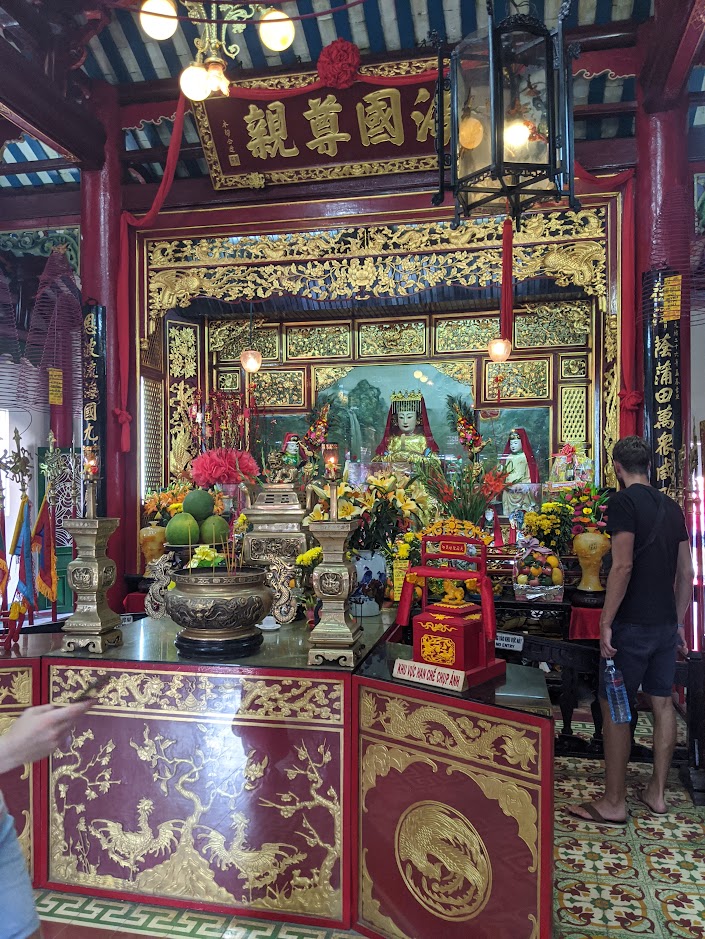
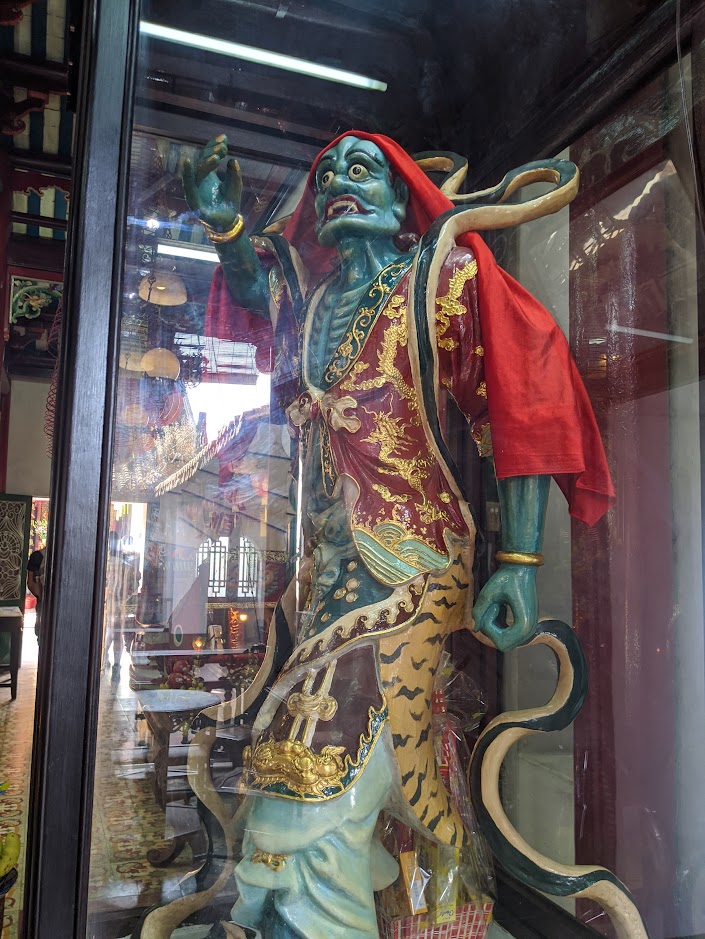
Mazu never gained a large following in Viet Nam, which is in some part due to there already being an important Mother Goddess in Vietnamese folklore, known as Đạo Mẫu. Despite not being widely known by many Vietnamese, Mazu is still honored in communities with some Chinese ancestry, mostly in Southern Viet Nam. There are similar shrines to this all over Viet Nam, where people will bring offerings of all sorts to be placed on the altar, light incense, and speak to ancestors or deities. It is always a special moment to come into these intimate spaces and feel the energy of the room.
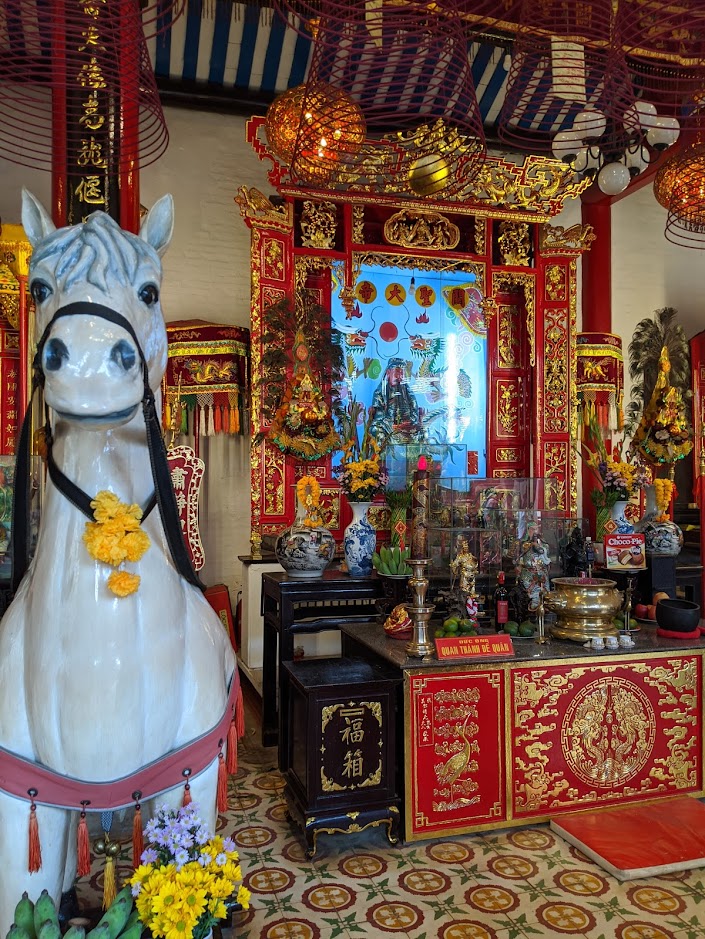
Here is another shrine, although I do not know who it honors. As you can see, it is also quite ornately designed and decorated. Outside of most shrines, you can usually find nearby shops that sell different items for offerings, including flowers, snacks, alcohol, fruit, and much more. Most Vietnamese have a shrine in their homes and businesses, and will put out offerings of items their family members liked while they were alive. For shrines to deities, the offerings are usually less personal and keep to the standard of flowers, fruits, and, of course, Choco Pies.
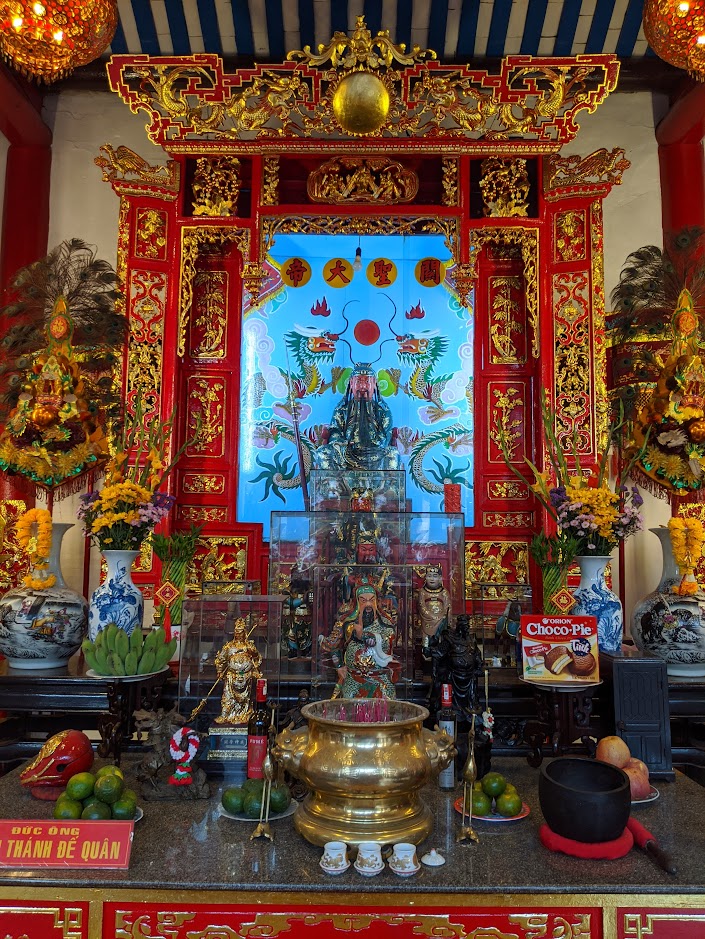
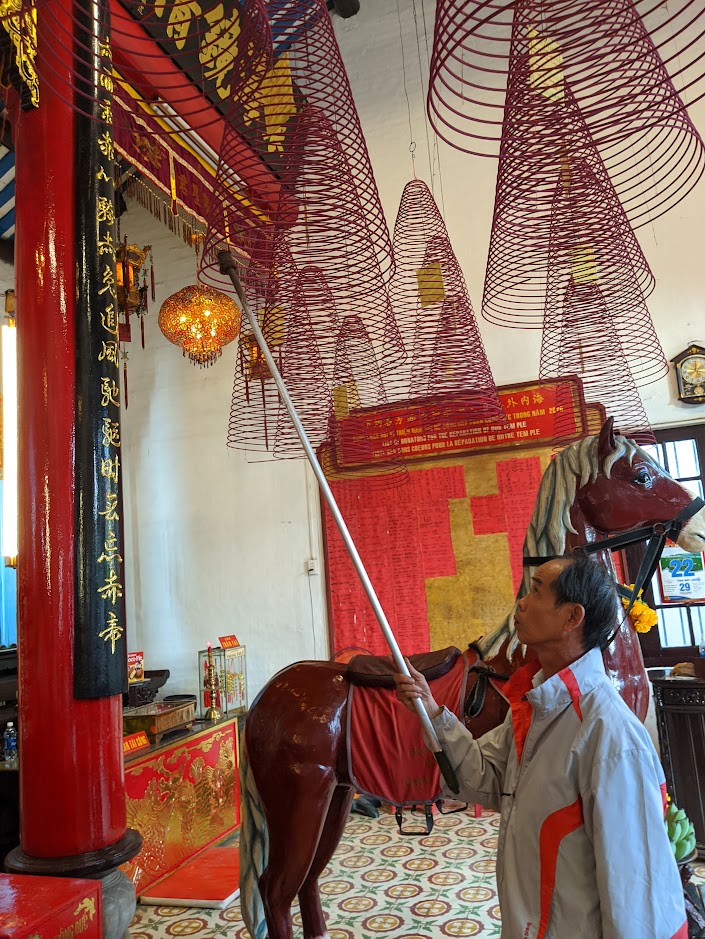
If you like dragons, you will love this place. There are some really cool dragon statues located throughout.
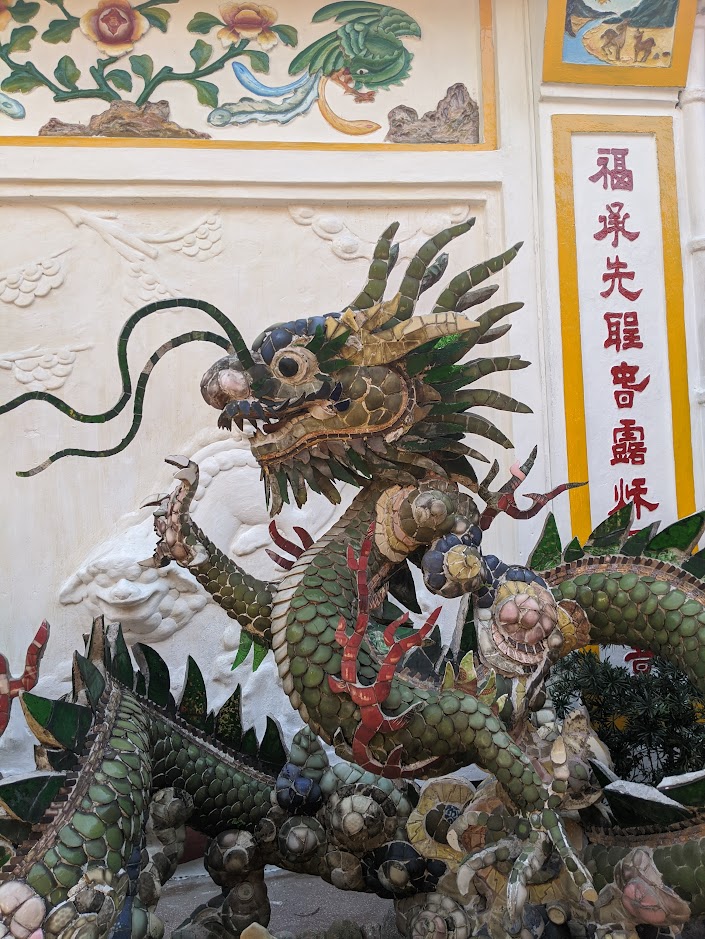
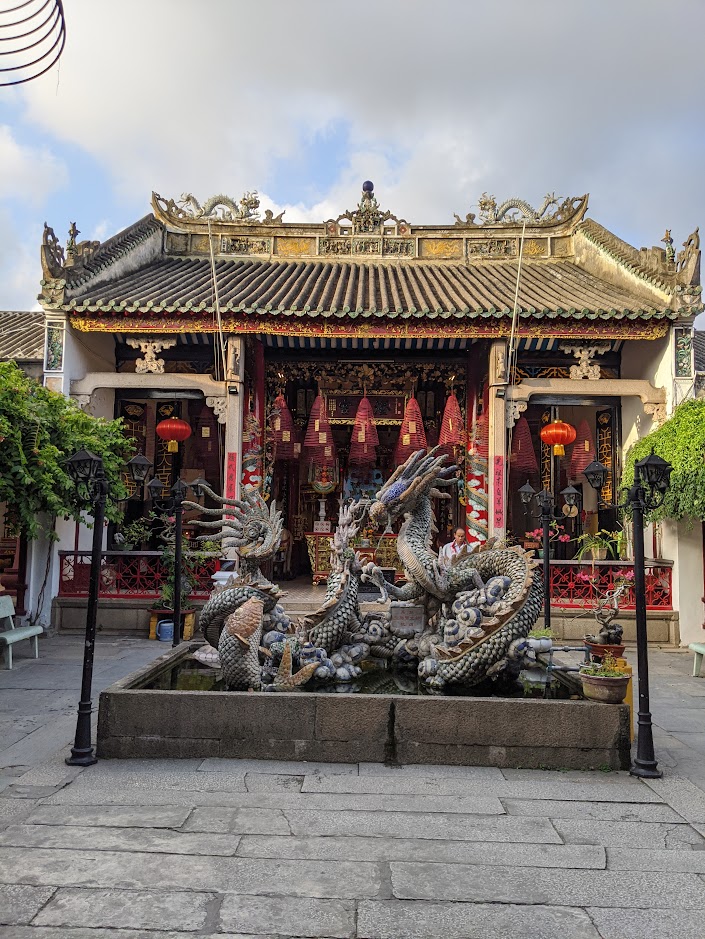
Dragons are believed to symbolize strength, power, and prosperity, and were also seen as symbolic protectors against evil.
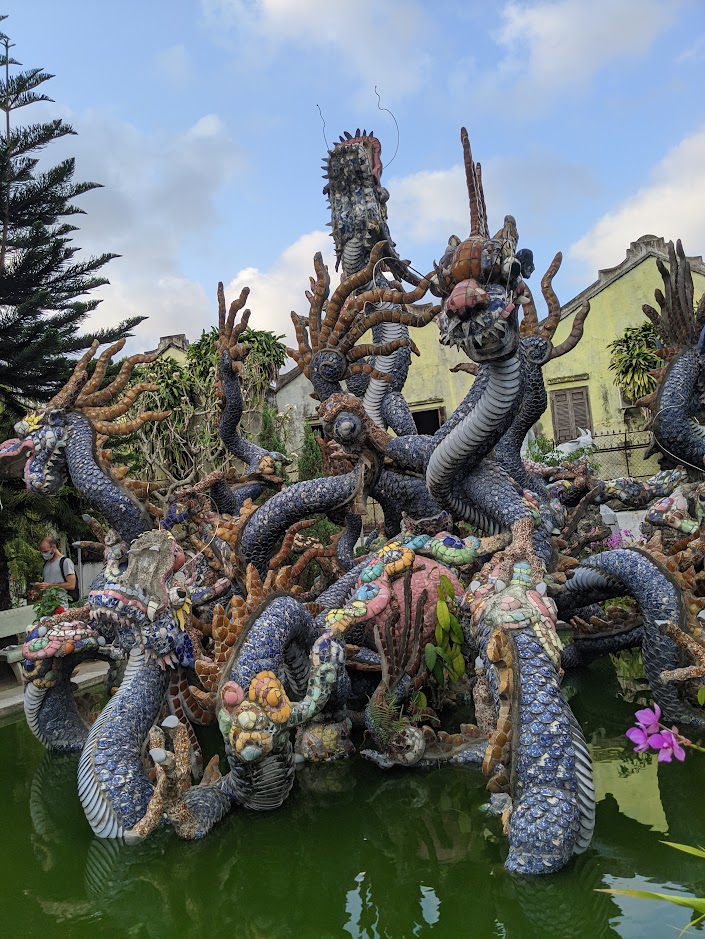
I found this sculpture to be particularly fascinating due to its large and chaotic design, and also the beautiful use of mosaic tilework.
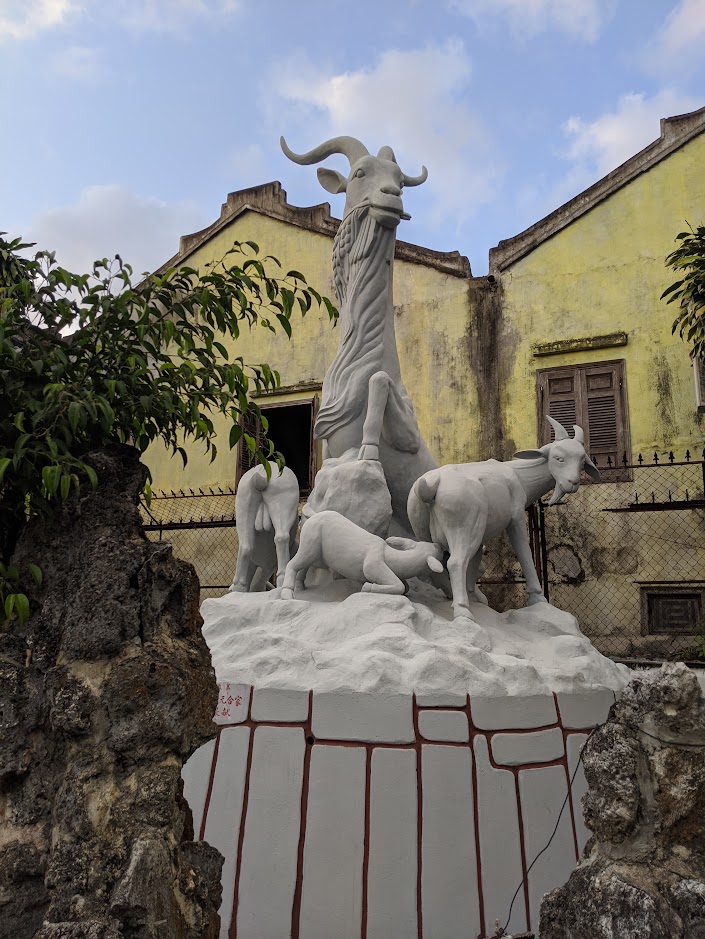
This one is based on a famous Chinese motif about three goats that symbolize good beginnings and prosperity.
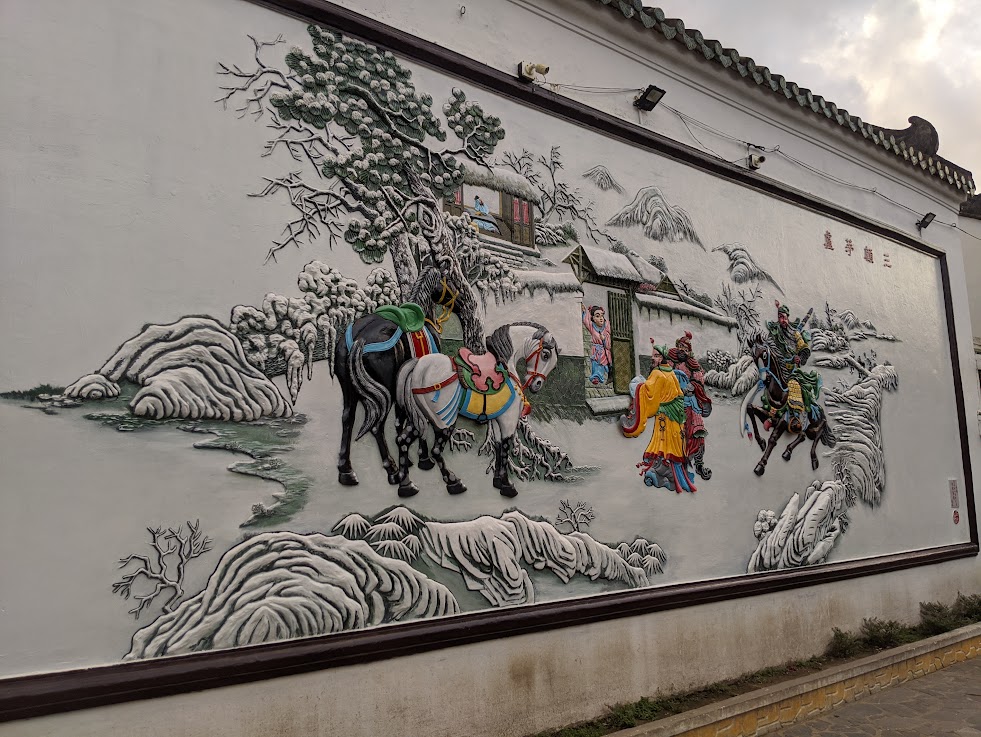
Here is a mural which was to my surprise, instantly familiar to me as a scene from the ancient Chinese novel The Romance of the Three Kingdoms. Having spent many hours playing Dynasty Warriors, a video game based on that book, I recognized the rider in the mural could be none other than the famous warrior Guan Yu in his characteristic green robes and armed with his iconic Dragon Crescent Blade.
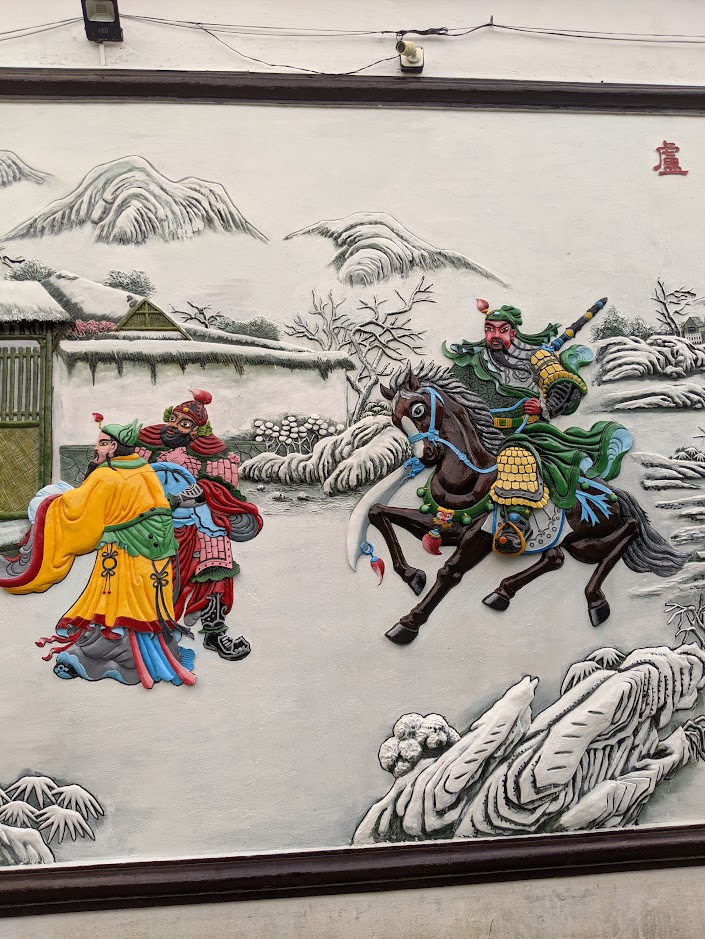
Guan Yu was known to be both honorable and powerful. In Chinese temples and assembly halls, he is viewed as a symbolic protector of righteousness, loyalty, and fair dealings.
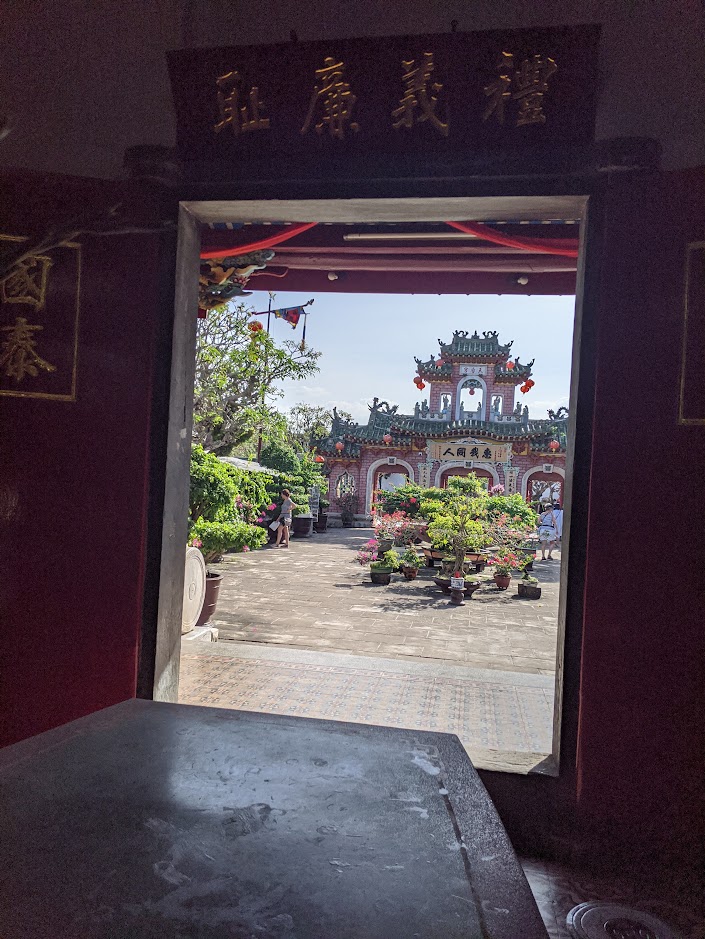
It is really impressive how well preserved this place is, and it is a nice little visit for anyone visiting Hoi An. To come here, you will need to buy a Hoi An Ancient Town ticket, which is 120k VND or about $5. The ticket also gets you into a few other historical sites in the old quarter.
I hope you enjoyed reading about my visit to the Fujian Assembly Hall in Hoi An Ancient Town.
All photos were taken by me. Have a nice day!
You can check out this post and your own profile on the map. Be part of the Worldmappin Community and join our Discord Channel to get in touch with other travelers, ask questions or just be updated on our latest features.
The Fujian Assembly Hall looks so wonderful, and your photos truly capture the beauty of the shrines and sculptures 💖 It's amazing how you connected the Guan Yu mural to Dynasty Warriors ✨ That's such a cool personal touch. Thanks for sharing this gem! 💕
Thank you for your kind words. I am glad you appreciated my post. :)
Great architecture, magnificent paintings .@giathebao